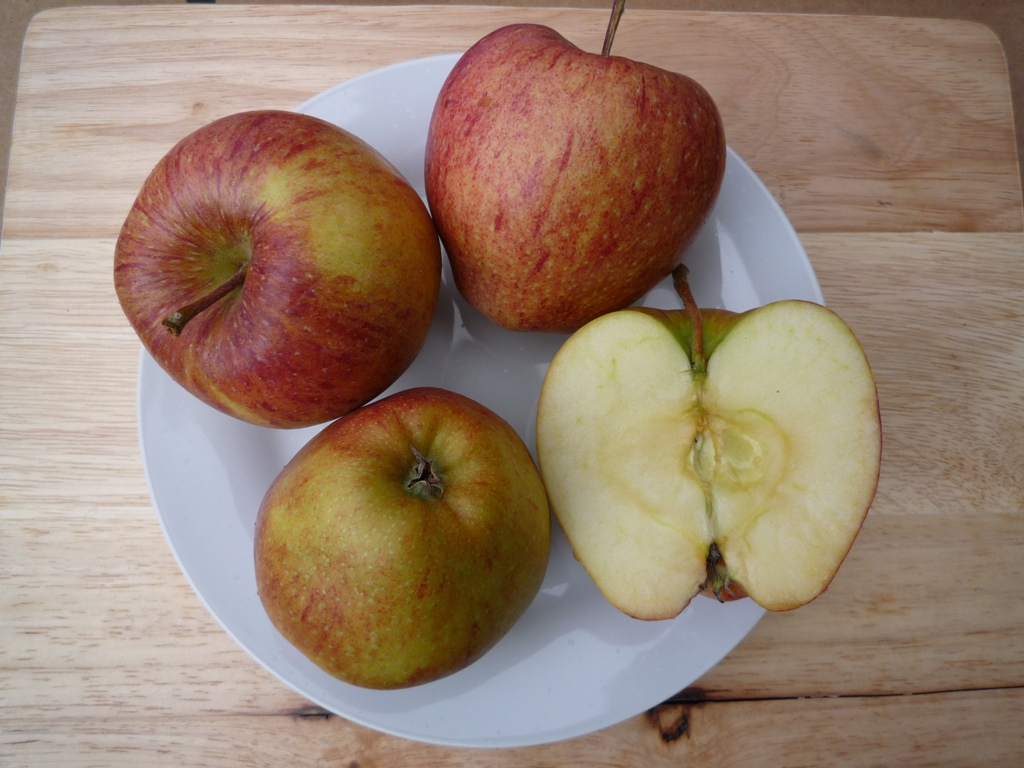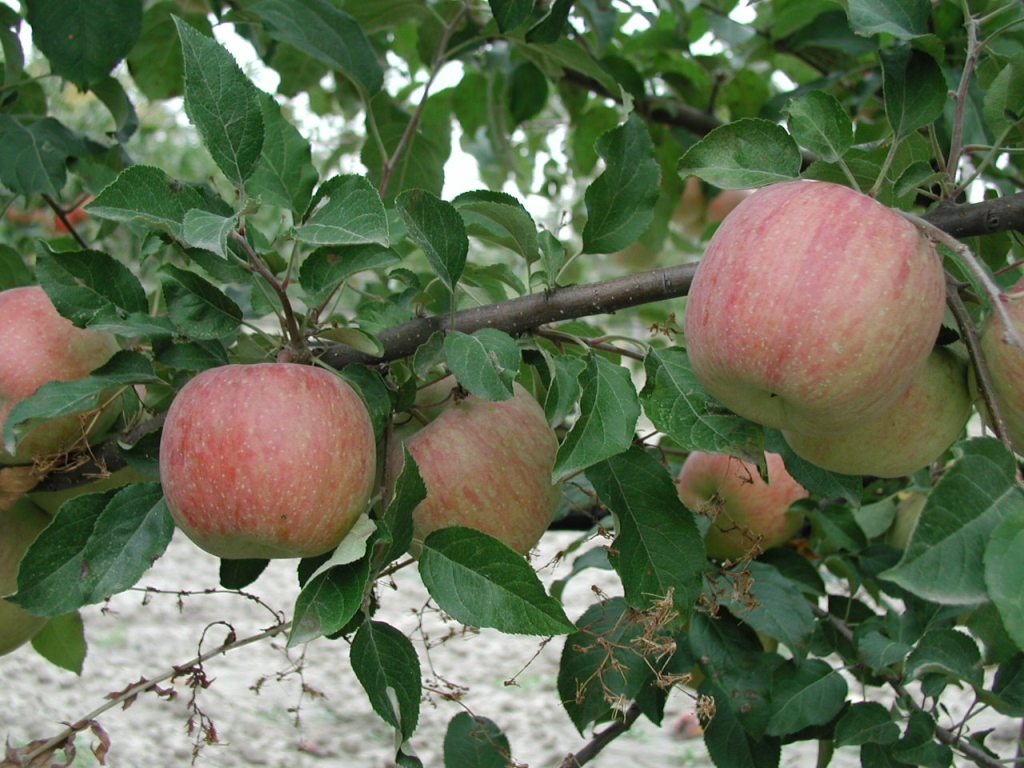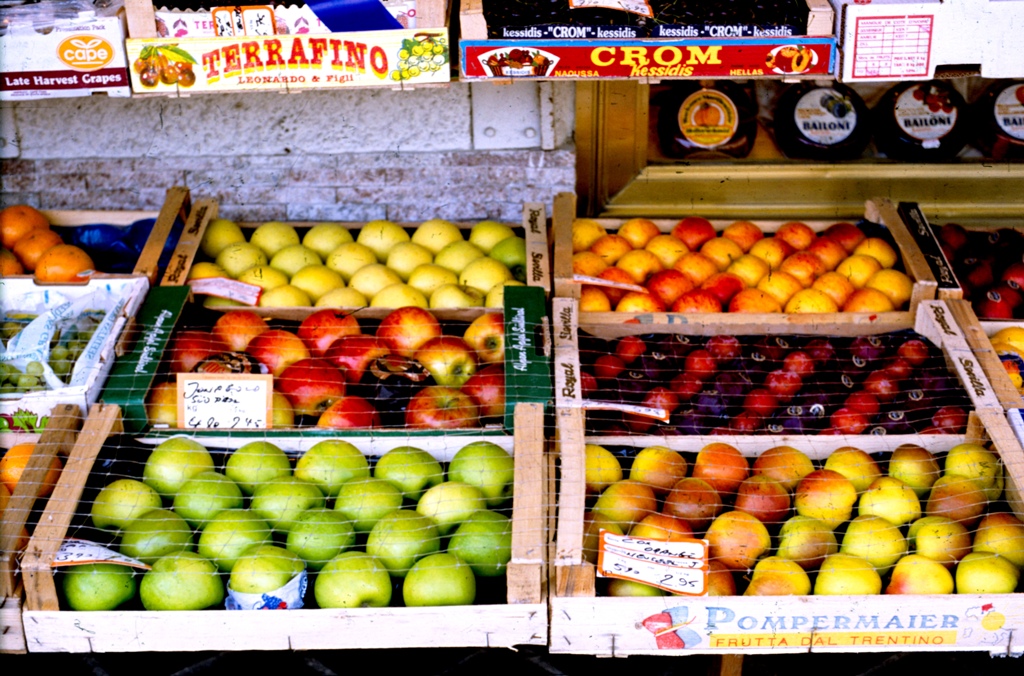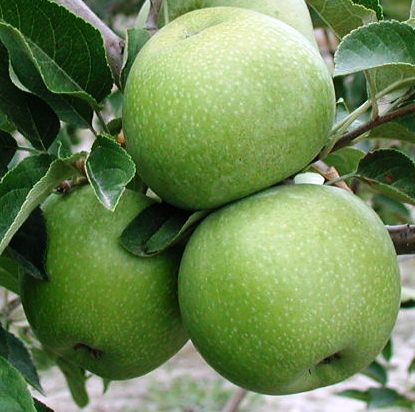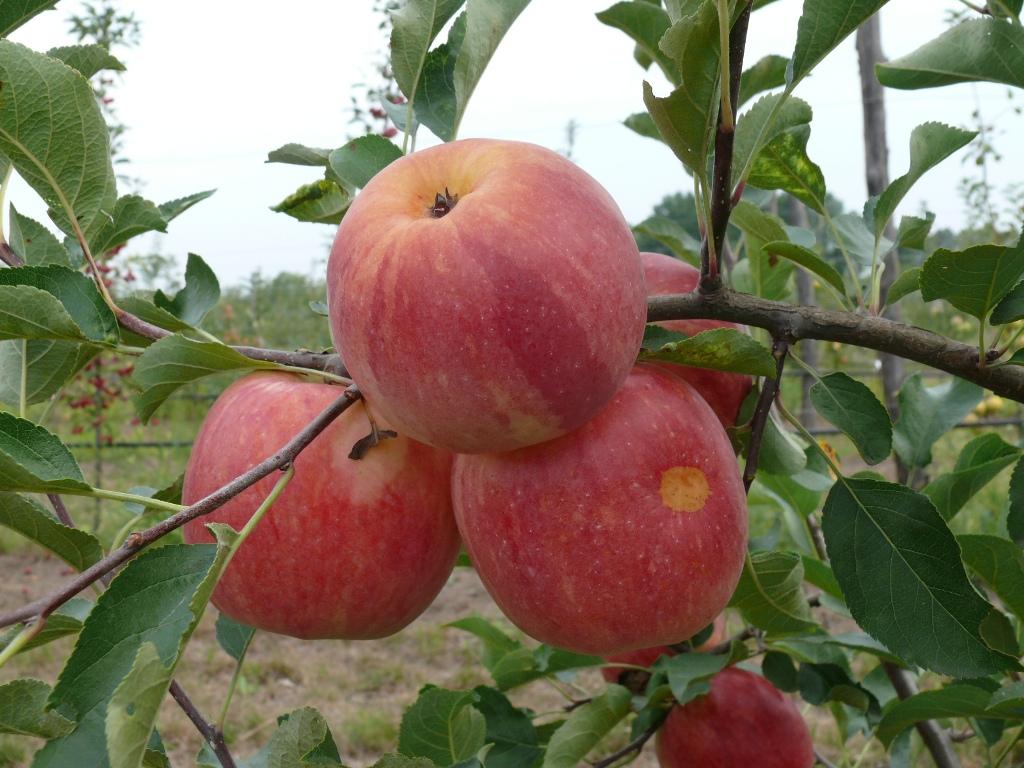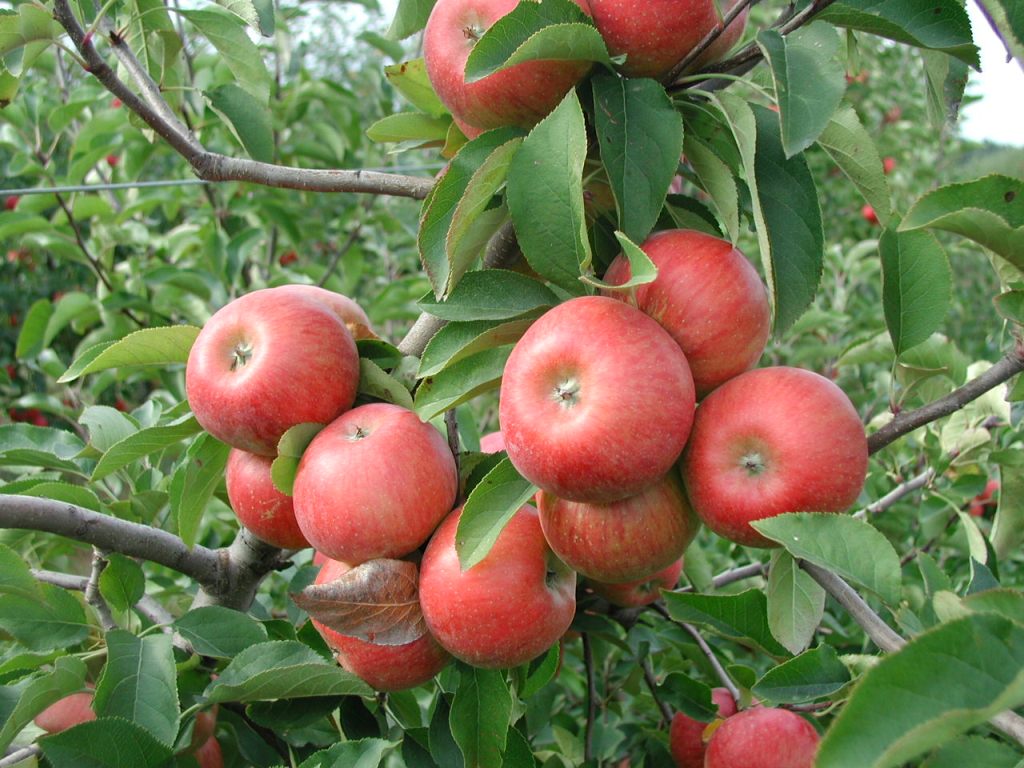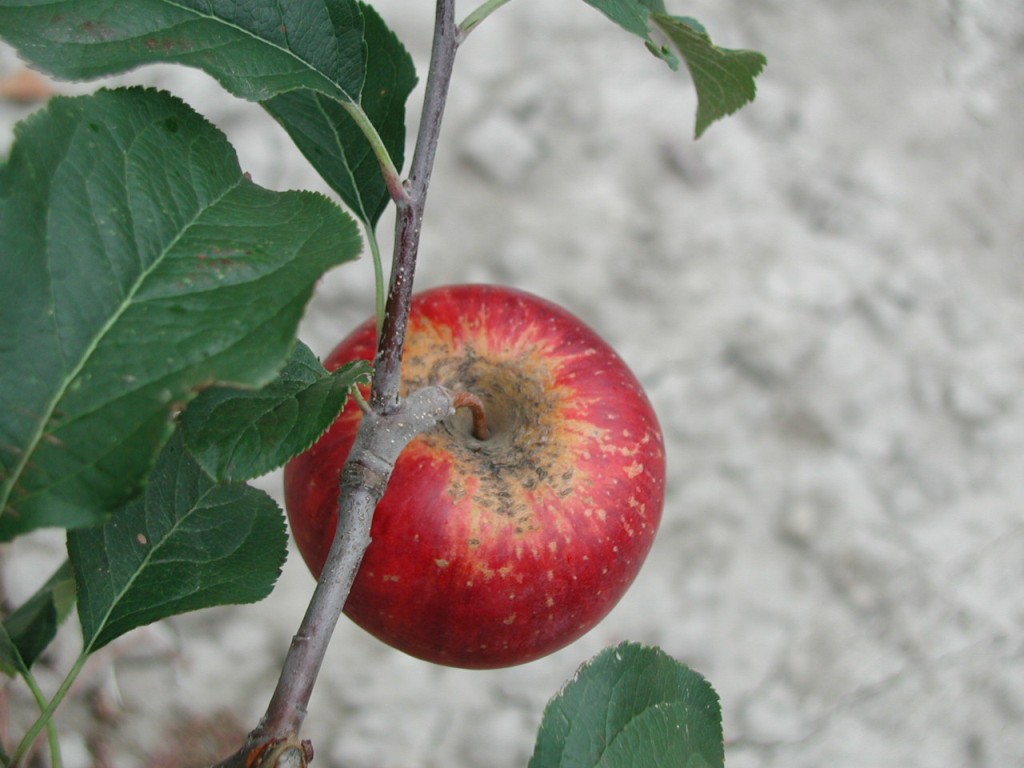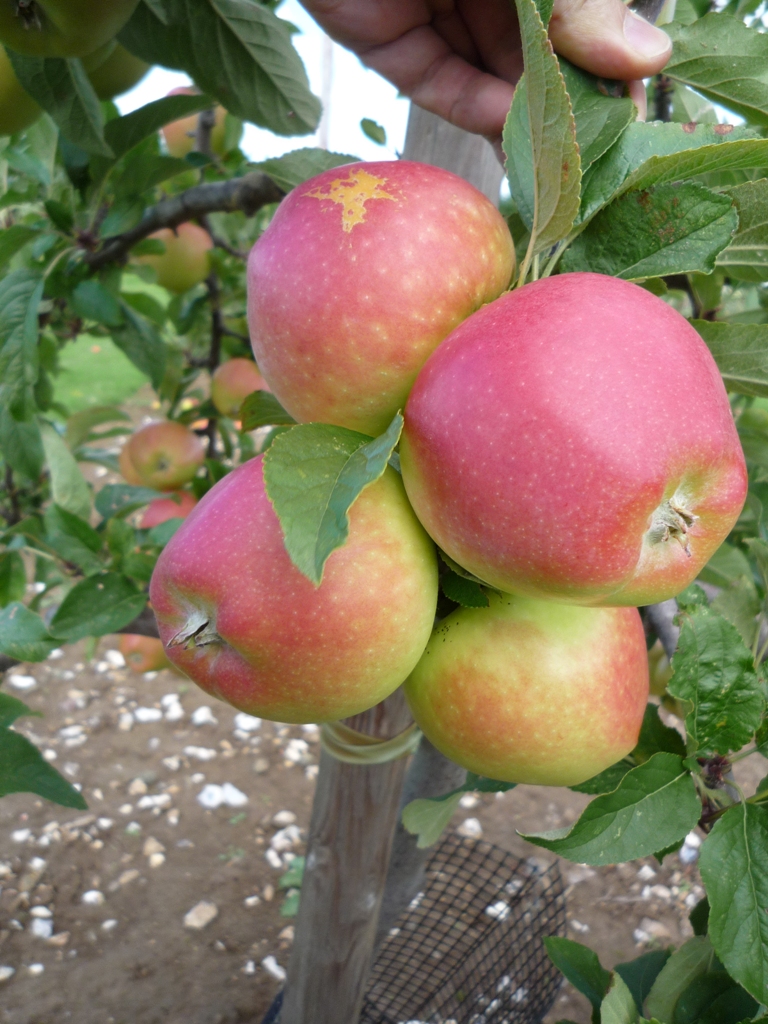Apple breeding trends and aims in the world. Successful and promising new cultivars
Author: Magdolna Tóth
1.1. A brief history of apple cultivation and breeding
Apple is one of the oldest fruit species. Apple residues were found e.g. at Jericho, in the Jordan valley and in Anatolia.Their origin is estimated to around 6500 BC, but it is impossible to identify from where these fruits got there.The most likely hypothesis is that the firts place of involving apple into cultivation was the territory between Caspian Sea and Black Sea, and apple was grown in this area already around 3000 BC. Actually, the discovery of grafting determined the further history of domestic apple. It gave not only the possibility for growers to reproduce a good quality tree, but it allowed the survival of the best ancient varieties as well.
It is almost sure, that domestic apple arrived in Europe by Roman intermediation. In the 3rd century, the Romans established the first plantations in the territory of the present France, Spain and Great-Britain. In later centuries, some emperors (e.g. Charles the Great) and mostly religous orders had a great role in the preservation and renewal of apple cultivation. The widespread distribution of apple cultivation began in the 12th century. The first named cultivars appeared at this time, and according to the propagation possibilities of the age, the seeds of these varieties reached all places of the expanding world. At least 120 cultivar descriptions were born in Western Europe until the 17th century. In 1826, The English Royal Horticultural Society reported about at least 1200 apple cultivars.
In North America, settlers began the naturalization of apple in the 16th and 17th century, and transported it to South America. The first apple plantations were established in the territory of New England in the 1620’s and 1630’s. Jonathan Chapman played a leading role in spreading apple to the West Coast. In Canada, French settlers established the first apple plantations in the 17th century. The beginning of apple cultivation can be dated to the 1650’s in South Africa, to 1788 in Australia and to 1814 in New Zealand. The role of China is more and more increasing in the world’s apple cultivation, and the production development is still in progress. At the beginning of the 1990’s, China’s total production was 4 million tons, which increased five times until the end of the decade, and eight times until present.
Apple breeding itself is quite long-standing as well. Tendentious breeding work started in the 17th century in France, where cultivars were selected from seedlings (e.g. ‘Renet’, ‘Kalvil’). The first person to create new apple cultivars scientifically, by conscious breeding, was Thomas Andrew Knight (1759–1835). He was the first to identify, that it is a more useful way to create a new variety, if the pollen of one cultivar is transported to the flower of another cultivar.
The work of apple breeding expanded more and more in later centuries, and a systhematic apple breeding began in a number of breeding centers around the world. An American survey at the end of the 20th century reported about 57 organized apple breeding programs in 25 countries of the world. There are around 70 apple breeding centers at present, most of them state financed, but the number of private financed projects is increasing. As a result of the long ago significant marketing activity, in case of apple, consumers know the cultivars quite well.
1.2. Evolution biology, gene sources
In taxonomy, apple is a member of Pomoideae subfamily of Rosaceae family.We have increasingly more knowledge about the exact botanic and genetic origin of domestic apple, Malus × domestica. It is highly probable that the original domestication was followed by a hybridisation between species. Therefore M. × domestica is a complex hybrid, which developed through thousands of years, but probably its main ancestor is the Central Asian Malus sieversii (Ledeb.) M. Roemer, which can be found even nowadays from the Tien-san mountain until the edge of the Caspian Sea. In the formation of M. × domestica varieties - during natural hybridisation - in the territories of Asia, the following species played surely a role: Malus prunifolia (Willd.) Borkh., Malus baccata (L.) Borkh., Malus mandzsurica (Maxim.) V. Komarov, and M. sieboldii (Regel) Rehder. In Western (European) areas, Malus sylvestris (L.) Mill. and Malus orientalis Uglitz. ex Juz. contributed to the formation of cultivars. Where the habitat of Malus sieversii (Figure 1.1.) overlapped with either of the above mentioned species, a crossing must have happened definitely, resulting in a great diversity.
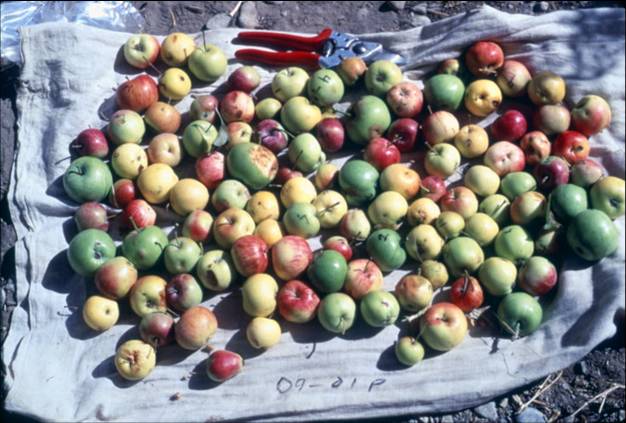
Figure 1.1.: Diversity of Malus sieversii collected by American researchers in the Caucasus (Photo: http://exhibits.mannlib.cornell.edu/apples/expeditions.htm )
The development of a phylogenetic system is still awaited, which is based on molecular well marks reflecting the cultivars’ relationships of origin and relatives. A number of questions are unanswered, for example the rate of the genes of Malus sylvestris and other Malus taxa present in the genetic matter of the old cultivars of the Carpathian Basin is unclear. The first Hungarian results concerning this topic were reported on the base of the joint work of Budapest Corvinus University, Department of Genetics and Breeding and Department of Pomology.
In case of the most species in the subfamily Pomoideae, the haploid chromosome number is x = n = 17, which surely developed from one of the ancestors of the genus Gillenia (x = 9) by autopoliploidization (= 18 chromosomes, then one chromosome was deleted from the genome. Most of cultivated apple varieties are diploid (2x = 34). Triploids (3x = 51) are formed as progenies of two diploid cultivars, or less frequently of tetraploid x diploid or diploid x triploid cultivars. Their inheritance chances are minimal, as they are formed in 0.3 % on average as progenies of two diploid cultivars, but they have an increasing chance to be selected because of their more vigorous growth and good fruit characteristics. As a result of this, the rate of triploids is 5% in today’s world production of nearly 70 million tons. Some of them became a world cultivar (e.g. ‘Jonagold’). Tetraploids (4x = 68) are formed as chimeras of diploid trees or very rarely as progenies of triploid x diploid cultivars. We can have hexaploid plants after treating triploids with colchicin. The last two types have a very long juvenile phase, which results in a late onset, therefore they have no substancial significance in growing. Artificially created haploid plants are important only for breeding aspects. In 2010, as a result of the cooperation of 85 researchers, the apple genome became known, which is detailed in the periodical Nat. Genet. 2010/42.
1.3. Breeding methods
Substantially, the properly planned and executed fruit breeding covers three main tasks: (a) creation of genetic variability; (b) selection of the best genotypes; (c) evaluation of the selected genotypes (seedlings) whether they can really be competitive in cultivation and in the market. In conventional apple breeding programs the following breeding methods were used with success until present.
Selection of seedlings of known or unknown origin.
The majority of varieties proved to be the most successful in cultivation were formed like this. As examples we can mention ‘Golden Delicious’, ‘Jonathan’ and ‘Red Delicious’, which were discovered in the USA in seedling plantations established at the beginning of market cultivation. Another example is ‘McIntosh’, which were selected from a seedling hedgerow edging a pasture. ‘Cameo’ which became successful lately as a club variety, was also formed this way (Figure 1.2.).
Figure 1.2.: Fruit of ‘Cameo’, formed as a seedling of unknown origin (Photo: László Szalay)
Cross-breeding.
If we want to reach a clear goal, it is indispensable to know not only the mother cultivar but the father cultivar as well, so the selection of parent varieties is a highly important part of breeding work. For example, ‘Jonagold’ was created in the USA by crossing ‘Jonathan’ and ‘Golden Delicious’, as well as Fuji, Gala and Elstar were created this way.
Hybridization is still very popular in breeding resistant cultivars against major diseases (venturia scab, apple powdery mildew, fire blight). In selecting parent varieties, we go back to wild species as well in a number of cases, which inherit the gene(s) of resistance, and the suitable fruit-sized resistant market cultivars (Figure 1.3.: ‘Cordelia’) are created by so-called modified back-crossings, after more further generations. We need a multiple crossing to achieve multi-resistance, or to combine it with other good traits or to pyramiding.
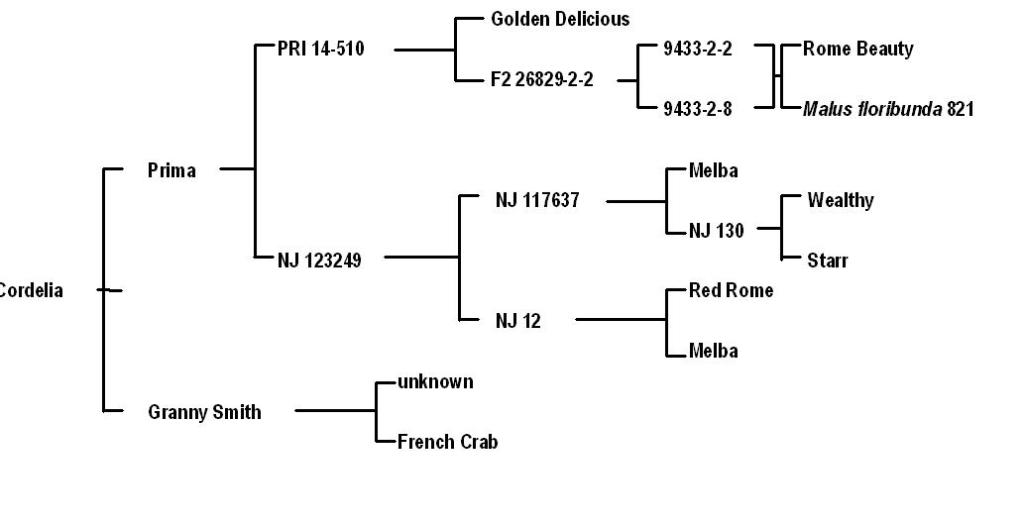
Figure 1.3.: Pedigree of ’Cordelia’ bred in Hungary
Selection of natural mutations.
Natural mutation is frequent at some apple varieties, this way a lot of new cultivars were formed. Fruit colour can be changed, for example a more intense red colour appeared at cultivar ‘Jonagored’, derived from ‘Jonagold’. Changes in growth habit and fruit bearing type are frequent, as less vigorous, moderately branching individuals appear which have shorter nodes. Examples are ‘Golden Spur’ with spur-bearing habit originating from cultivar ‘Golden Delicious’ as well as ‘Wijcik’, which is columnar, therefore not branching, originating from cultivar ‘McIntosh’. ‘Redspur Delicious’, originating from ‘Starking’ can be mentioned as an example to joint mutation of fruit colour and bearing habit.
Cultivars’ predisposition to this is different, as a lot of variants were formed from varieties e.g. ‘Delicious’, ‘McIntosh’, ‘Gala’, ‘Fuji’ and ‘Jonagold’ mentioned above. Variants created by mutation can be used in cross-breeding as parent partners, if the mutation has influenced layer L-2. Kiku has the best coloration among natural bud mutations of ‘Fuji’, which was discovered by an Italian farmer and which can be marketed under this name only by members of the variety club.
A
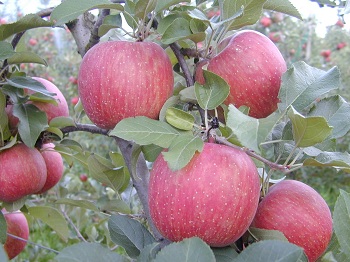
B
1.4. Figure 1.4.: Coloration of ‘Fuji’ (A) and Kiku (B) [Photo: Magdolna Tóth (A) and http://goodfruitguide.co.uk/fruits/apples/kiku/apple-kiku-kiku_brak-ontree-350x262 (B)]
Induced mutation.
In case of apple, X-rays are most often used for changing somatic cell characteristics, but gamma and neutron radiation as well as chemical intervention can also be used. Tetraploids can be induced by colchicin.
Although some successful examples can be mentioned (self-fertile clone of ‘Cox orange renet’; russet-free induced mutants of ‘Golden Delicious’: ‘Lysgolden’ and ‘Golden Haidegg’), the efficiency of the once popular method can still be arguable. Induced mutation is not already used, as it produced mostly chimeras, and often resulted in unexpected effects (e.g. smaller yield, deformed thickening). It also revealed, that fruits of more coloured variants are poorer in aromatic substances than those of the original cultivars.
Clonal selection.
To reach a better fruitfulness, progenies of a virus-free individual are involved in cultivation. Good examples are the virus-free clones of ‘Jonagold’, which have very good results in Western European production.
Biotechnology in the service of breeding.
Because of the possibilities are almost unlimited, such methods are increasingly used to help conventional breeding. Micropropagation as a biotechnological method, would enable the own-root cultivation of apple varieties. This would be significant in the propagation of columnar cultivars.
Markering is almost a general procedure in breeding. The technique has developed a lot: first protein-based (biochemical) markers were used, subsequently the research continued by involving more reliable, DNA-based (RFLP, RAPD, SSR, AFLP and S-SAP) markering techniques. In recent breeding programs it is general to support the work by genetic markering.
The possibility of plant transformation is highly promising, as it provides infinite possibilities in increasing both biotic and abiotic resistance. The first transformed apple cultivar was ‘Greensleeves’. Until present, genetic modification of nearly 50 apple cultivars was carried out, but there are no transgenic apple varieties in the market yet. Plant transformation can serve very important scientific examinations because of getting to know the operation of genes. Regarding that European consumers are highly negative about transgenic plants, apple breeders and biotechnologists in Europe changed to the cisgenic method. This means that the breeder uses only genes from the plant gene bank during plant transformation. It is a question, if consumers can be convinced that cisgenic plants are safe regarding all aspects.
However, plant transformation, research and experimental use of transgenic method is of high importance scientifically, as it helps to know the operation and biological function of genes. For example, a German transgenic apple has a high significance in breeding, as it bears flowers after 10 months at the latest after rooting during glasshouse nursery.
1.4. Major aims of breeding
Below we summarize the most importants aims of breeding. More details about major results and inheritance affairs can be found in “Apple” book of the series Cultural Flora of Hungary.
Developing biotic resistance against the following pathogens:
- venturia scab,
- powdery mildew,
- fire blight,
- leaf rust,
- pests (resistance against e.g. aphids, wooly apple aphid)
Improving fruit quality characteristics:
- fruit size,
- fruit shape,
- fruit colour,
- achieving surface russet or immunity to it,
- achieving the desired flesh colour,
- improving flesh texture,
- improving taste and nutritional values, achieve suitability for specific food industrial purposes,
- reducing tendency to fruit problems.
Regulating ripening time, improving shelf-life.
Regulating flowering time.
Regulating rate and method (e.g. one fruit from one inflorescence) of fruit setting.
Achieving self-fertility.
Modifying growth habit and tree habit.
Special aims of breeding:
- improving winter hardiness,
- regulating winter cold need,
- achieving parthenocarpy, e.g. combinied with columnar habit.
1.5. Information about Hungarian apple breeding
Hungarian apple breeding looks back to a relatively short past and has smaller results compared to other countries. Naturally, folk selection was important also in case of apple. Some of the apple varieties created in the Carpathian Basin originate from church gardens, but apple breeding as a program started only in the second third of the 20th century.
Resistance against powdery mildew was one of the major breeding goals in most hybridization programs. Among former programs, the hybridization breeding launched by Sándor Kovács at the Department of Fruit Growing of the University of Horticulture in the 1960’s was the most successful. A continuation of this is the Corvinus Apple Breeding Program, managed by Magdolna Tóth and harmonized with international standards, in which the efficiency was increased by a new apple breeding method developed for domestic conditions.
The apple breeding program was launched in 1985 by more than 6000 seedlings, and is carried on with 5-7000 seedlings per year from 1992. Its main directions are: (1) better quality; (2). multiresistance; (3) red-fleshed apple; (4) resistant pollinator ornamental apple; (5) Hungarian gene sources. One of the main aspects of hybrid evaluation is tolerance or resistance against major apple diseases (Venturia scab, apple powdery mildew, fire blight, canker). Selection work is supported by molecular marker analysis and fruit nutritional analysis. An important effort is to create special cultivars for processed apple products beside fresh consumption or to create dual purpose apples. Therefore special quality targets also came into view in the last decade of breeding work (e.g. cultivars suitable for apple chips production, not tending to quick flesh discoloration; cultivars suitable for apple compote, having light-coloured skin and flesh as well as high nutritional value; red-fleshed varieties). As a result of this program, four cultivars certified by the state were added to the national list in 2011 and 2012. Additionally, seven more candidates were announced for state certification. Some dozens of new breeding gene sources were selected for the breeding work, among which old apple varieties from the Carpathian Basin, resistant to fire blight are internationally recognized.
1.6. The status of cultivar use
Growers can choose from a wide apple cultivar assortment which is continously expanding by even better cultivars. Consumers would be concerned about widening the market supply, but in spite of this, the variety use of plantations is dominated by a couple of cultivars for a long time. The lucky coincidence of a cultivar’s beneficial characteristics with consumer needs does not seem to be enough for the success, as a cultivar’s becoming popular can significantly be influenced by commercial and product handling aspects, changes in cultivation technologies, sometimes even non-targeted advertisements.
For example Red Delicious and Golden Delicious became popular in the 50’s and 60’s in the USA, because their fruits looked good on the shelves of supermarkets which opened after one another at that time. ‘Granny Smith’ arrived from the southern hemisphere first as an out of season apple, and after the favourable welcome of this acidic fruit, its cultivation rate increased on the northern hemisphere in the 70’s and 80’s. The appearance of ‘Gala’, ‘Fuji’ and ‘Braeburn’ coincided with the opening of hypermarkets in the 90’s, in which a larger shelf surface was dedicated to fruits, and where long shelf-life was a primary requirement for tray packaging. In Hungary, the success of ‘Granny Smith’ was supported by a tootpaste advertisement, at the end of which a dentist bit into a green apple. This was so impressive, that ‘Granny Smith’ fruits were sold in Hungarian markets with the title “blend-a-med apple”.
Figure 1.5.: Fruits in rows on a supermarket shelf (Photo: Magdolna Tóth)
The European spreading of ‘Golden Delicious’ and ‘Jonagold’ is a good example for the role of cultivation techniques, as these varieties with their „standard Golden” bearing type are ideal for slender spindle crown form. In Hungary, the introduction of Red Delicious-type cultivars was failed because of the improper selection of rootstocks and spacing as well as the schematic use of the “Sándor Nagy-type pruning”. However, this could help ‘Idared’ to become popular as it tolerates this pruning method well.
In an international context, large-scale apple cultivation was limited to a couple of varieties almost everywhere, but differences could be seen between cultivar use of the continents. Because of globalized apple trade and its influence on variety composition of plantations, the situation was changed (since about 2000), and the same cultivars are produced all over the world. According to a survey extending to the 34 most important producing countries (excluding China), only five cultivars (in order of quantity: ‘Red Delicious’, ‘Golden Delicious’, ‘Granny Smith’, ‘Gala’, ‘Fuji’) gave 60% of the world’s yield in 2000. If we take China into account and we examine the recent years, ‘Fuji’ will be first with its over 20% proportion in the 50% of the above mentioned cultivars. Among other cultivars only the quantity of ‘Jonagold’ and ‘Idared’ is significant, mainly in Europe.
If this trend is continuing, it will result in the remarkable decrease of the assortment concerning both fresh fruit and processed products, and the danger of a possible epidemic has to be considered as well. Therefore the major aim of apple breeders is to diversify the cultivar use again, and to develop a regionally independent variety assortment which is mostly suitable for environmentally conscious cultivation. This is also a reason why it is important to know the promising new cultivars.
1.7. New cultivars – varieties recommended for trying in plantations
1. 7. 1. Scab resistant and multi-resistant apple cultivars
Artemisz
It was created as an open pollinated seedling of ‘Prima’ at the Budapest Corvinus University, Department of Pomology. According to SSR examination results, the male parent cultivar is ‘Jonathan’. Its Hungarian patenting is in progress, then it can be involved in cultivation. It can be harvested in the second week of September, it is a cultivar for processing (concentrate, dried apple), but can be recommended for fresh consumption for those who like acidic apples. The fruit is mid-large or large, conic, its surface ribbing is moderate. Its yellow ground colour is covered by brownish red on a large fruit surface. The skin bloom is medium, covered by mid-large lenticels. The flesh is white, does not brown, firm, crunchy, with acidic taste and a distinctive perfume flavor. The tree is moderately vigorous, its habit is spreading, blooms both on spurs and long laterals as well. It has a medium early onset, high-yielding, yields regularly. Blooms medium early or medium late. Its S genotype: S2S7. The scab resistance is determined by more genes (Rvi6+Rvi2-Rvi8). Resistant also against powdery mildew, the shoot is resistant against fire blight, while the flower is susceptible.
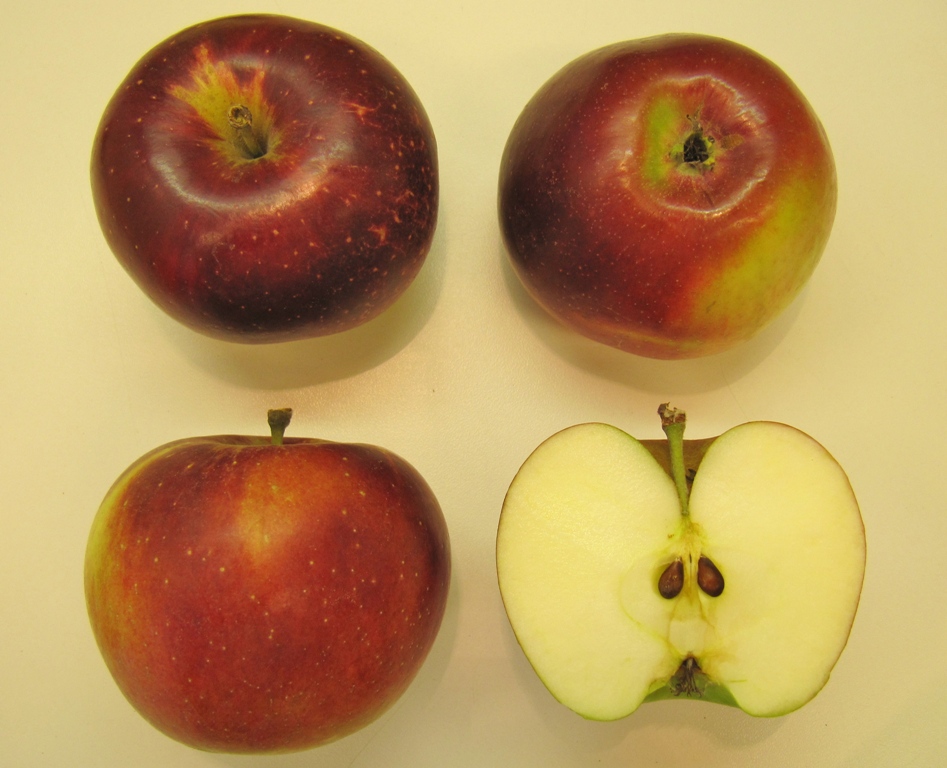
A
B
1.6. Figure 1.6.: Fruit of ‘Artemisz’ (Photo: Ildikó Pázmándi (A) and Magdolna Tóth (B))
Baujade
A cultivar bred and patented in France. A result of a multi-generation crossing, its direct parents are ‘Granny Smith’ and a hybrid no. P5R 42-52. It can be harvested in mid-October, the fruit can be stored well until April. Recommended mostly for fresh consumption. The fruit is mid-large, round conic, its slightly waxy skin is green, covered by pale lenticels. Its greenish white flesh is firm, juicy, with harmonic taste. Moderately or highly vigorous, with medium branching. Blooms medium late or late. High and regular yielding. It is suitable for warm habitats, otherwise its maturation cannot be guaranteed. Scab resistant (Rvi6 gene), and according to our examinations, it is moderately susceptible to powdery mildew and slightly to fire blight.
Figure 1.7.: Fruit of ‘Baujade’ (Photo: Magdolna Tóth)
Cordelia
It was bred as the hybrid of ‘Prima’ and ‘Granny Smith’ at the Budapest Corvinus University, Department of Pomology. Its CPVO patenting is in progress, then it can be involved in cultivation. It can be harvested in the first decade of October in two courses. It is outstanding for fresh consumption, concentrate, apple chips and puree as well. The fruit is quite large, ellipsoid, its surface is slightly ribbed, the skin is moderately waxy. The ground colour is yellowish green, covered in 40-60% by light red or red and medium-sized lenticels. The flesh is cream-coloured, firm, crunchy, moderately juicy, acidic-sweet, with a pleasant ananas-like flavour and an outstanding polyphenol and pectin content. The tree is highly, then moderately vigorous, with a spreading habit, bears fruits mostly on spurs. Has an early onset, high-yielding. Blooms early or medium early, alleles S2S23 determine its fertility compatibility. Resistant against scab (Rvi6+Rvi1) and powdery mildew, the shoot is moderately resistant against fire blight, while the flower is susceptible.
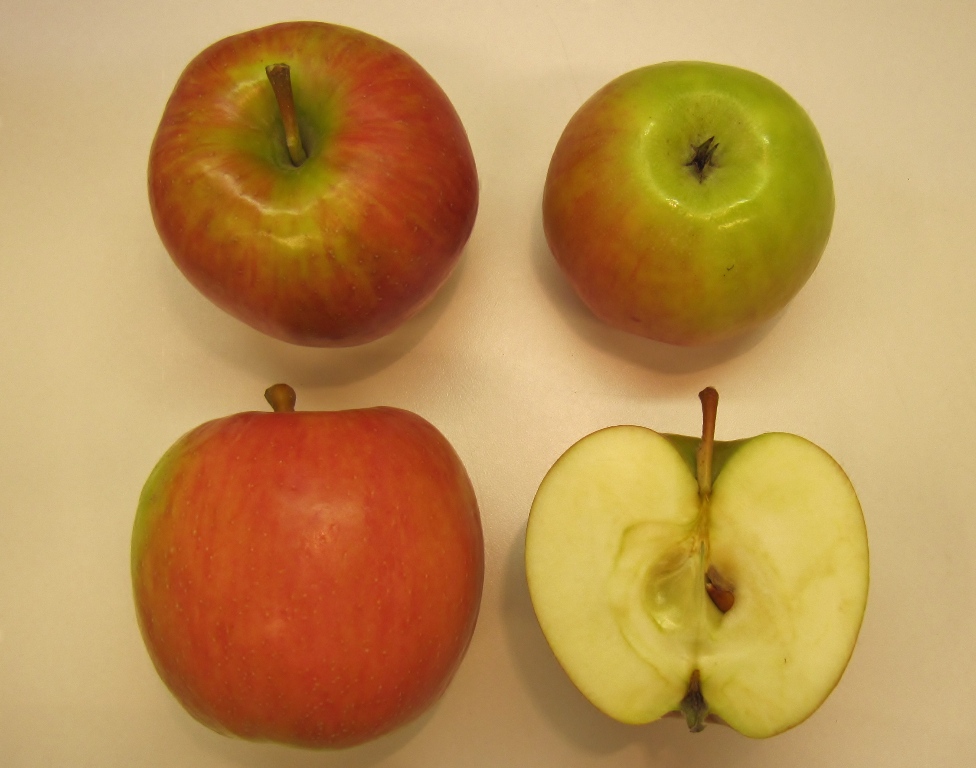
A
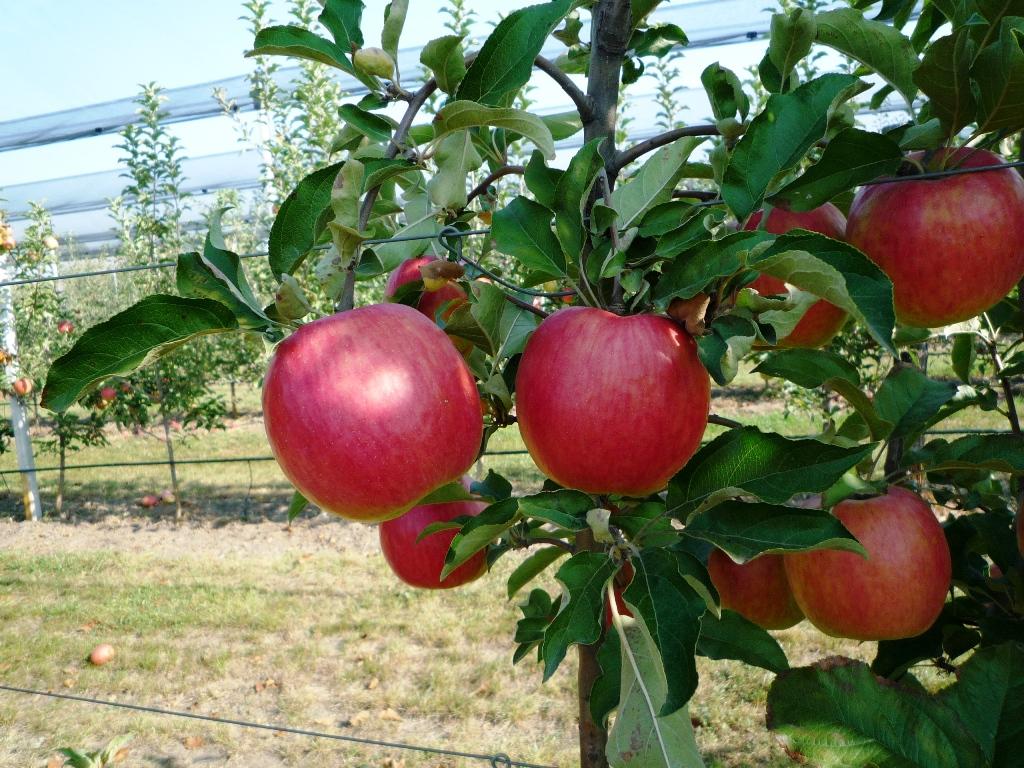
B
Figure 1.8.: Fruit of ‘Cordelia’ (Photo: Ildikó Pázmándi (A) and Magdolna Tóth(B))
Galarina
It was created in France by crossing ‘Gala’ and ‘Florina’. It can be harvested 1-2 weeks after ‘Gala’. The fruit is small or mid-large, flattened round, 65-100% of surface is covered by orange-red on the greenish yellow ground colour, striped by dark red. Its flesh is yellowish white, does not brown for long, crunchy, juicy, the taste is aromatic, a little acidic, as it has quite a small sugar content. Scab resistant cultivar (Rvi6), and susceptibility to neither powdery mildew nor fire blight was observed in French and Canadian examinations.
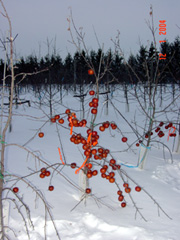
A
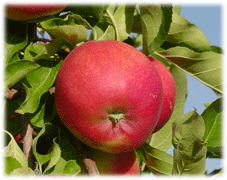
|
B
Figure 1.9.: Fruits of ‘Galarina’ (A), which remain on the tree for long (B)
(Photo: http://www.cyberfruit.info/apple/galarinadescription.asp )
Goldrush (Syn.: Co-op 38)
It was bred in the USA, a fifth generation progeny of Malus floribunda 821, and ‘Golden Delicious’ is also present in its pedigree. Very late ripening, it can be harvested at the beginning-middle of October and can be stored for at least 7 months. Its fruit is mid-large or large, ovate, the skin surface is smooth. Its colour is greenish yellow, deep yellow after post-harvest ripening, with a reddish or bronze blush on the sunny side. The fruit surface is covered by sporadic flashy lenticels. Its flesh is yellow, with a moderately harsh texture, firm and crunchy. The taste is spicy, rich in flavors, acidic. Moderately vigorous, a little upright in habit, develops mostly short fruiting parts. Blooms in the mid-late flowering group, its S genotype: S2S28. Very high-yielding, but it tends to alternate, therefore requires fruit thinning. Scab resistant cultivar ( Rvi6+Rvi7), and according to our examinations, it shows moderate resistance against fire blight and moderate susceptibility to powdery mildew.
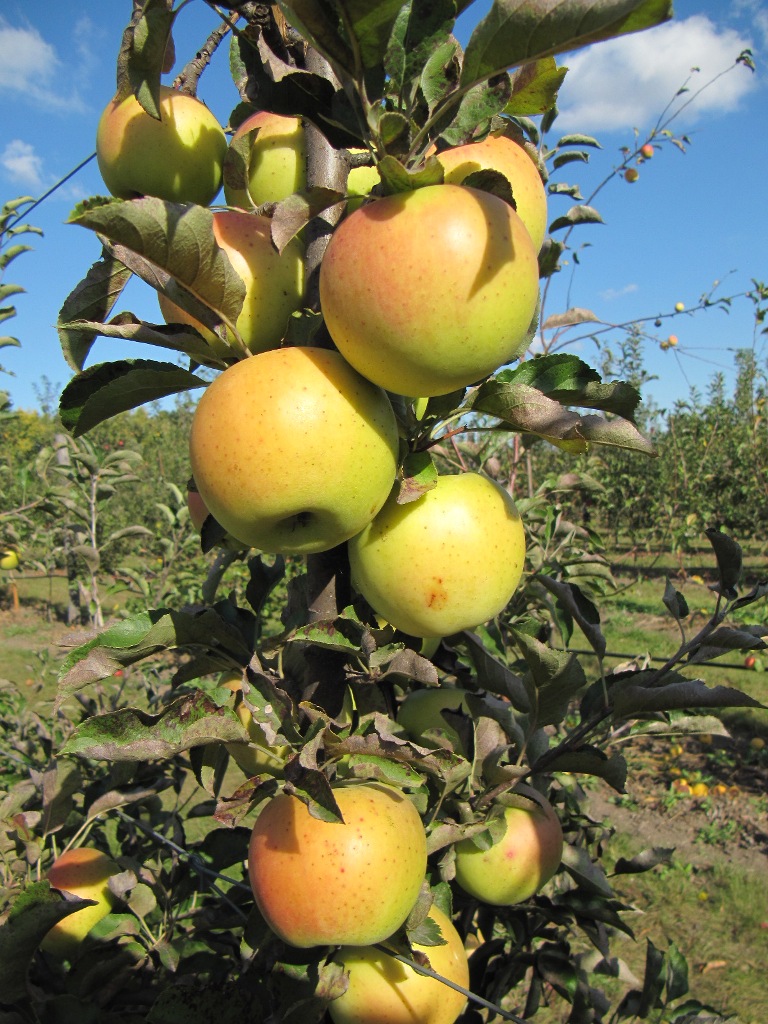
Figure 1.10.: Fruit of ‘Goldrush’ (Photo: Ildikó Pázmándi)
Hesztia
It was bred as an open pollinated seedling of ‘Prima’ at the Budapest Corvinus University, Department of Pomology. Its CPVO patenting is in progress, then it can be involved in cultivation. It can be harvested in two courses in the last week of August and first week of September. A multi-purpose cultivar (fresh consumption, dried apple and concentrate). Its fruit is large or very large, conic, moderately ribbed. Develops a red cover colour on 60-80% of the yellowish green ground colour, covered by an intense bloom and moderately dense small lenticels. The flesh is light yellow, moderately firm, crunchy, juicy, sweet-acidic, with a pleasant flavour and an outstanding polyphenol content. Sensitive to temperatures below 2 ºC during storage. The tree is moderately vigorous, spreading in habit. Develops fruits both on spurs and long laterals. Has a mid-early onset, yields high and regularly. It blooms mid-late or late, its S genotype: S7S10. Its scab resistance is encoded by more genes (Rvi6+Rvi2-Rvi8+Rvi1), and has a high resistance against powdery mildew and fire blight as well.
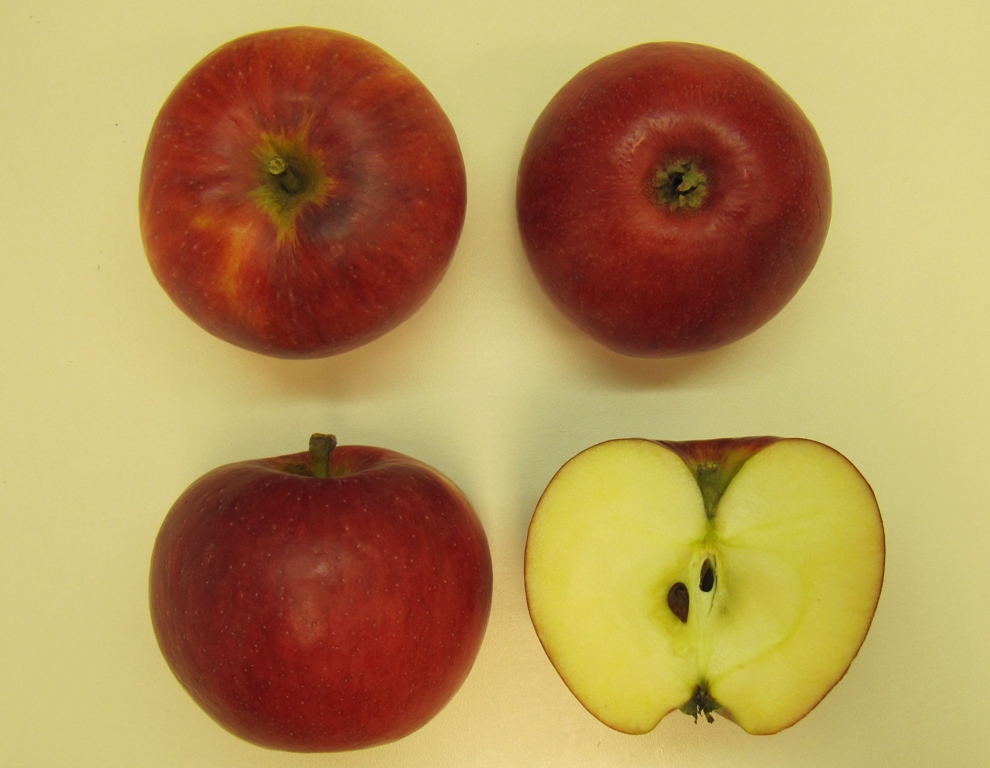
A
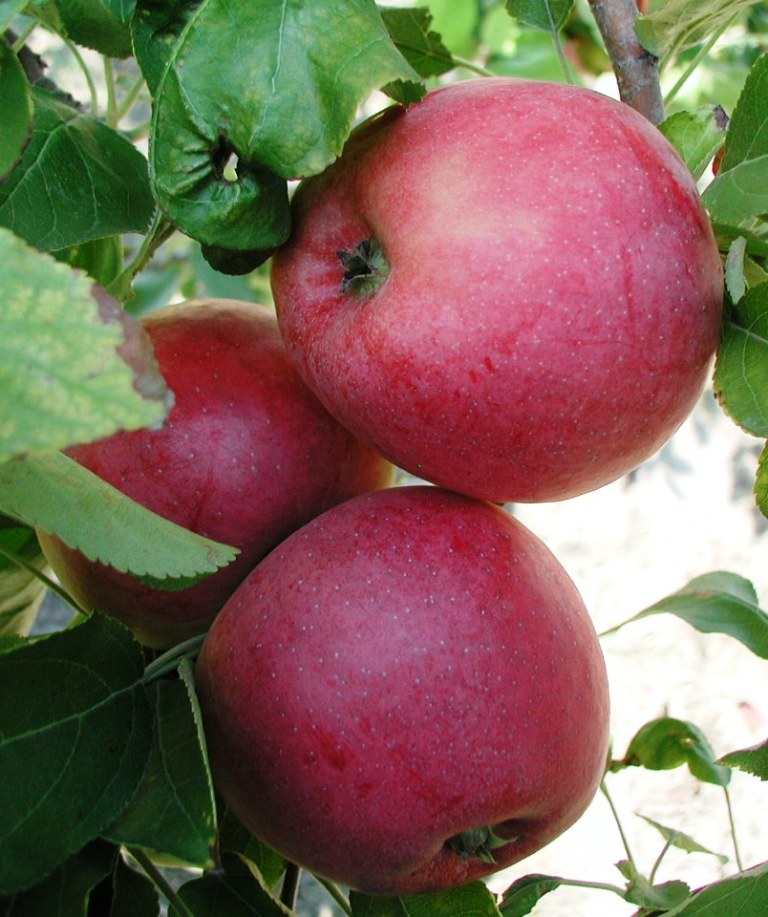
B
Figure 1.11.: Fruit of ‘Hesztia’ (Photo: Ildikó Pázmándi (A) and Magdolna Tóth (B))
Reanda
It was bred in Germany by crossing ‘Clivia’ and a third progeny hybrid of Malus floribunda. In Hungary it is certified by the state, distributed by Hunyadi Garden Nursery. It can be harvested from mid-September, can be stored in cold storage until the end of February. Dual purpose variety, fruits can be sold for fresh consumption or for food industry (concentrate) as well. The fruit is mid-large or large, round or a little elongated truncated cone. Its skin is a little bloomy, the ground colour is greenish yellow, covered on 3/4th of the surface by red. The flesh is yellowish white, firm, juicy, the taste is pleasant sweet-acidic, flavoured. The tree is of weak growth habit, with a loose canopy. Blooms medium late. Has an early onset, yields well and regularly. Resist quite well to winter and spring frosts. Scab (Rvi6 gene) and fire blight resistant, its resistance against powdery mildew is moderate and slightly susceptible to apple canker. To prevent bitter pit, Ca spraying is recommended.
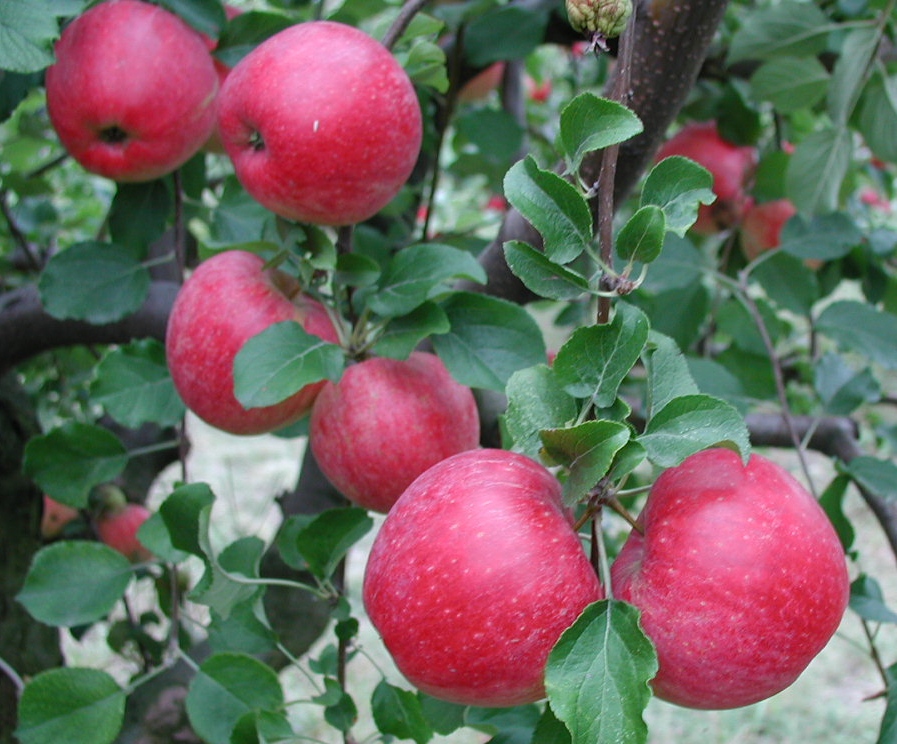
Figure 1.12.: Fruit of ‘Reanda’ (Photo: Magdolna Tóth)
Rebella
It was bred in Germany by crossing ’Golden Delicious’ and ’Remo’. In Hungary it is certified by the state, distributed by Hunyadi Garden Nursery. It can be harvested in mid or end September, keeps its nutritional values until January. The breeders introduced it as a fresh consumption apple, but its fruits are highly suitable for the food industry as well (concentrate). The fruit is large or mid-large, round or slightly elongated. Its yellow, green spotted skin is covered in 80% by a light red cover colour. The flesh is yellow, soft, juicy, a little acidic with distinctive flavour. Moderately vigorous, with a spreading and loose canopy. Blooms medium late. Has an early onset, yields usually high and regularly. Not demanding on habitat. Resistant against scab ( Rvi6 gene), powdery mildew and European red mite. Its flowers proved to be highly susceptible to fire blight.
Figure 1.13.: Fruit of ‘Rebella’ (Photo: Magdolna Tóth)
Remo
It was created in Germany by crossing ‘James Grieve’ and a third generation progeny of Malus floribunda. In Hungary it is certified by the state, distributed by Hunyadi Garden Nursery. It can be harvested in the middle of September, in some years in the first decade, keeps quality until the end of November. A special variety for concentrate production, but in warm years it can be marketed for fresh consumption as well after storage. The fruit is mid-large, slightly flattened round, 50-70% of the surface is covered by a wine-red, washed colour and a meshed russet. It has a high acid and sugar content. Its growth habit is slow, the crown is loose, the branches are thin and hanging. At least M. 26 or a stronger rootstock is recommended in industrial plantations. Its flowering time is mid-early. Very high-yielding, yields regularly. Resistant against scab (Rvi6) and powdery mildew, according to our examinations, the shoots show moderate resistance against fire blight, while the flowers show moderate susceptibility to it. Resists well to winter frosts and moderately to late spring frosts, not really preferred by European red mite.
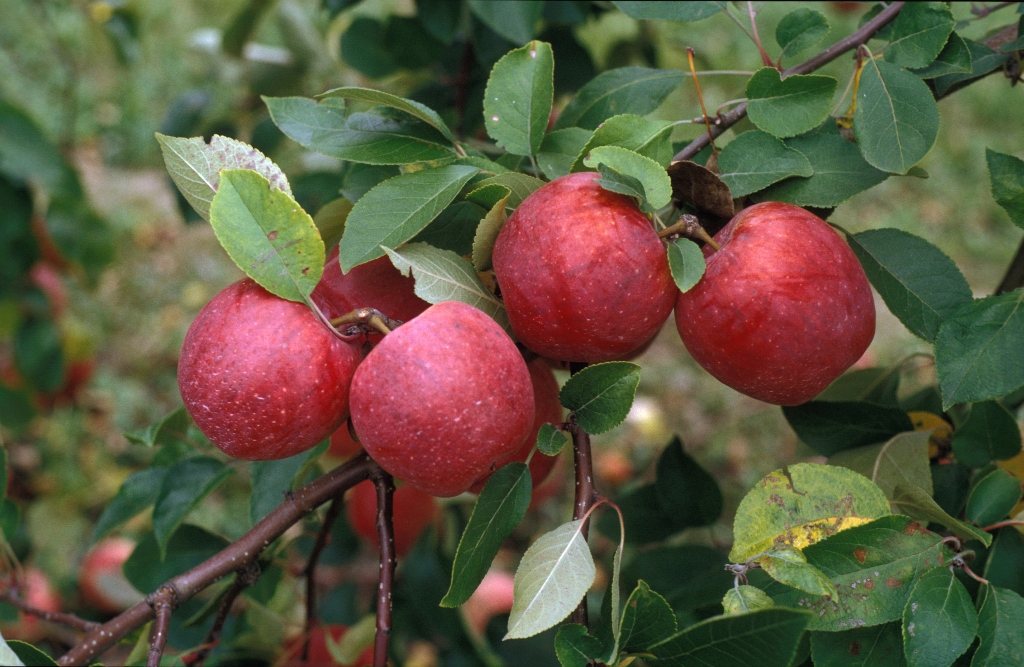
Figure 1.14.: Fruit of ‘Remo’ (Photo: Magdolna Tóth)
Rozela
Bred in the Czech Republic by crossing ‘Vanda’ and‘Bohemia’. Patented, its Hungarian distributor is Holland-Alma Ltd. It can be harvested one week before ‘Golden Delicious’. The fruit is mid-large or large, forms a truncated cone, slightly ribbed at the calix, almost the whole surface is covered by a lively red colour, with sparse lenticels. The flesh is yellowish, medium firm, crunchy, juicy, sweet, with low acids, pleasant flavour. Its tree is slightly or moderately vigorous. Early onset, regular and high yield. Resistant against scab (Rvi6), tolerant to powdery mildew.
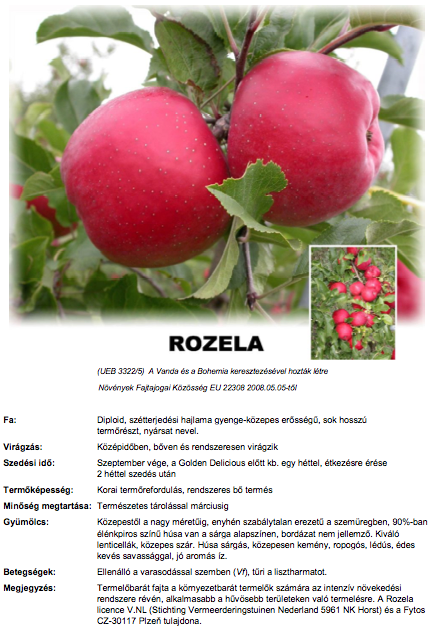
Figure 1.15.: Fruit of ‘Rozela’ (Photo: http://www.ueb.cas.cz/cs/system/files/users/public/ROZELA.pdf )
Sirius
Bred in the Czech Republic by crossing ‘Golden Delicious’ and ‘Topaz’. It can be harvested 10 days after ‘Golden Delicious’. Patented, its Hungarian distributor is Holland-Alma Ltd. The fruit is mid-large or large, flattened round. Its ground colour is greenish yellow, then yellow, and occassionally a light pink blush develops on the sunny side. The flesh is yellow, firm, crunchy, tastes sweet-acidic, flavoured. The fruit softens under uncontrolled atmosphere, therefore a controlled atmosphere storage is recommended. Has an early onset, its yield is regular and outstanding. Blooms mid-early, triploid, so not suitable as a pollinator. Scab resistant (Rvi6).
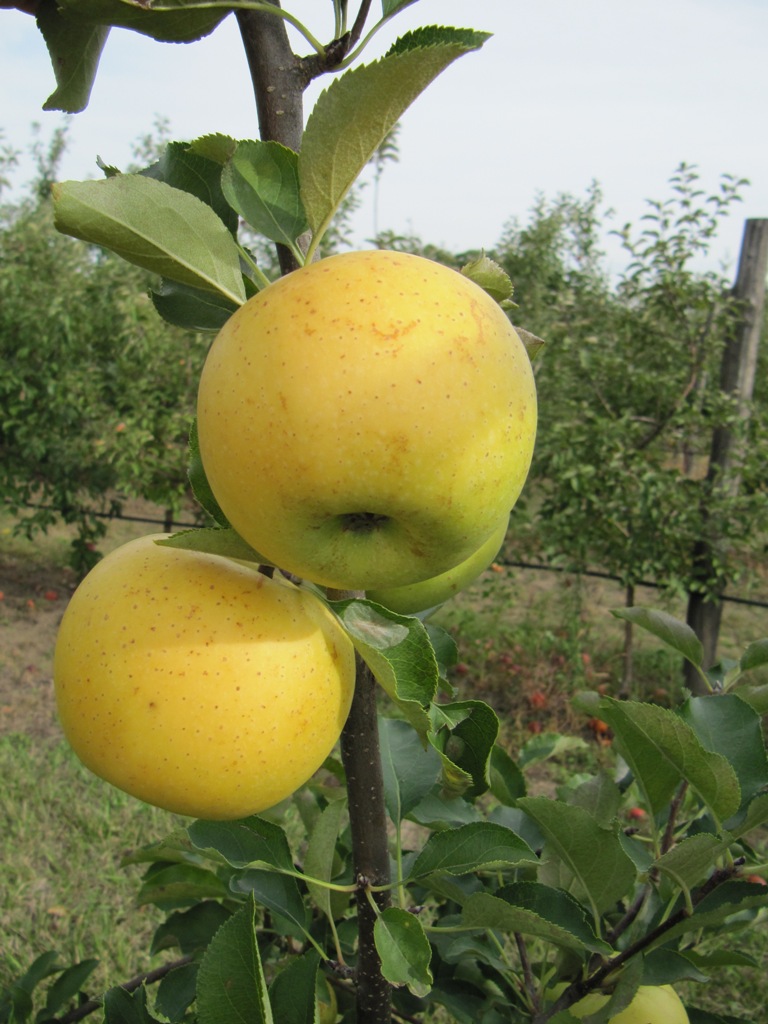
Figure 1.16.: Fruit of ‘Sirius’ (Photo: Ildikó Pázmándi)
Topaz
It was bred in the Czech Republic by crossing ‘Rubin’ and ‘Vanda’. Ripens at the end of September, a cultivar for fresh consumption, can be stored until April. The fruit is mid-large, flattened round, highly russets near the pedicel hole in Hungary. Its yellow ground colour is covered in 1/4–3/4 part by an orange red, striped and washed colour. The cover colour is decorated by distinctive white lenticels. The flesh is yellow, firm with fine texture, juicy. Its taste is sweety or harmonic. Moderately - highly vigorous with good branching. Has an early onset, yields high and regularly. Blooms mid-early, its S genotype: S2S5. Resistant against scab (Rvi6), its resistance against canker is good as well, but according to our examinations, it is susceptible to powdery mildew and fire blight. Its earlier and more coloured bud mutation is ‘Red Topaz’, which is patented and distributed in Hungary by Holland-Alma Ltd.
A
B
Figure 1.17.: Productivity (A) and pedicel hole (B) of ‘Topaz’ (Photo: Magdolna Tóth)
1. 7. 2. Club varieties
The number of varieties cultivated in club system is increasing year by year in international cultivar use. In clubs organized around one cultivar, partners participate from the field of breeding, nursery propagation, growing and fruit trade. The aim of the possible highest profit is not concealed, which is reached either by a continuous marketing work, or by growing restrictions. As a result of advertisements at the market entry, fruits of club varieties can be sold at a higher prize, and to keep it, the consortium increases the cultivation area only at a time and rate, when or where this higher prize can be maintained. So club varieties ensure a higher profitability only for a limited number of growers. Certain club varieties can be cultivated outside the club, but cannot be marketed under the brand name.
However, in spite of all self-interests, there is a huge advantage of the club variety system. This advantage is, that through broadening the assortment, they smuggle a little biodiversity into fruit trade in a small but hopefully increasing percentage of the world yield. Maybe it can change that extremely damaging need (large quantities of homogenous products), which is dictated by commercial chains towards their suppliers nowadays.
Recently, 34 club varieties were reported to be involved in cultivation in Europe. The plantation area planted till today is about 22 000 ha in the world. A welcome development, that more and more resistant cultivars join the club variety group. To demonstrate the fruit quality of the assortment, a brief description can be found below about some of the club varieties. According to the practice, the brand name is the first, which is followed by the registered name of the cultivar (if different) in parenthesis.
Ariane
It was bred in France, one parent variety is the hybrid of ‘Florina’ and ‘Prima’, the other is an open pollinated seedling of ‘Golden Delicious’. It can be harvested five days after ‘Golden Delicious’, suitable for fresh consumption. The fruit is small or mid-large, washed almost totally by a bright red and covered by small lenticels. Its yellowish, firm and crunchy flest is slightly acidic, has a specific flavour. The fruit can be stored well for 7 months. Scab resistant (Rvi6), and has a good resistance against fire blight and powdery mildew as well.
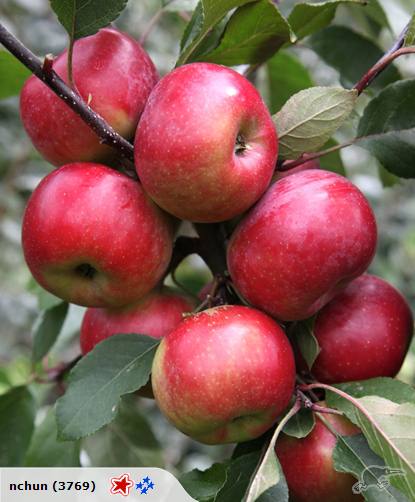
Figure 1.18.: Fruit of ‘Ariane’ (Photo: http://www.trademe.co.nz/home-living/outdoor-garden-conservatory/plants-pots/shrubs/auction-536843295.htm)
Cameo (Caudle)
It was bred in the USA as the open pollinated seedling of ‘Red Delicious’. Late ripening, can be harvested two weeks after ‘Golden Delicious’. Its fruit shape is an elongated truncated cone, the surface is washed by orange red on its yellowish ground colour, covered by red stripes. The flesh is firm, juicy, sweet and flavoured. Its disadvantage, that the pleasant cover colour, which is a part of the advertising, does not develop in all production areas. The tendency for alternancy is also a problem (Figure 1.2.).
Evelina (RoHo3615)
A better coloured bud mutation of ‘Pinova’ (Corail), its distribution started as a club variety. ‘Pinova’ itself is a fresh consumption cultivar bred in Germany by crossing ‘Clivia’ and ‘Golden Delicious’. In Hungary it is a cultivar certified by the state and can be distributed. It can be harvested in Hungary at the end of September, beginning of October, and can be stored well until April. Its mid-large, slightly conic fruit is washed or stiped by cinnabar red on half of the surface. The flesh is firm, juicy, pleasantly sweet-acidic. The tree is moderately vigorous, medium dense with pyramidal habit, yields regularly and highly. Blooms medium late, and because its tendency to set more fruits, thinning is recommended in most years. Without sufficient water supply or in dry and warm habitats its quality is not satisfactory Not resistant, but only slightly susceptible to diseases, not even winter and spring frost damage it.
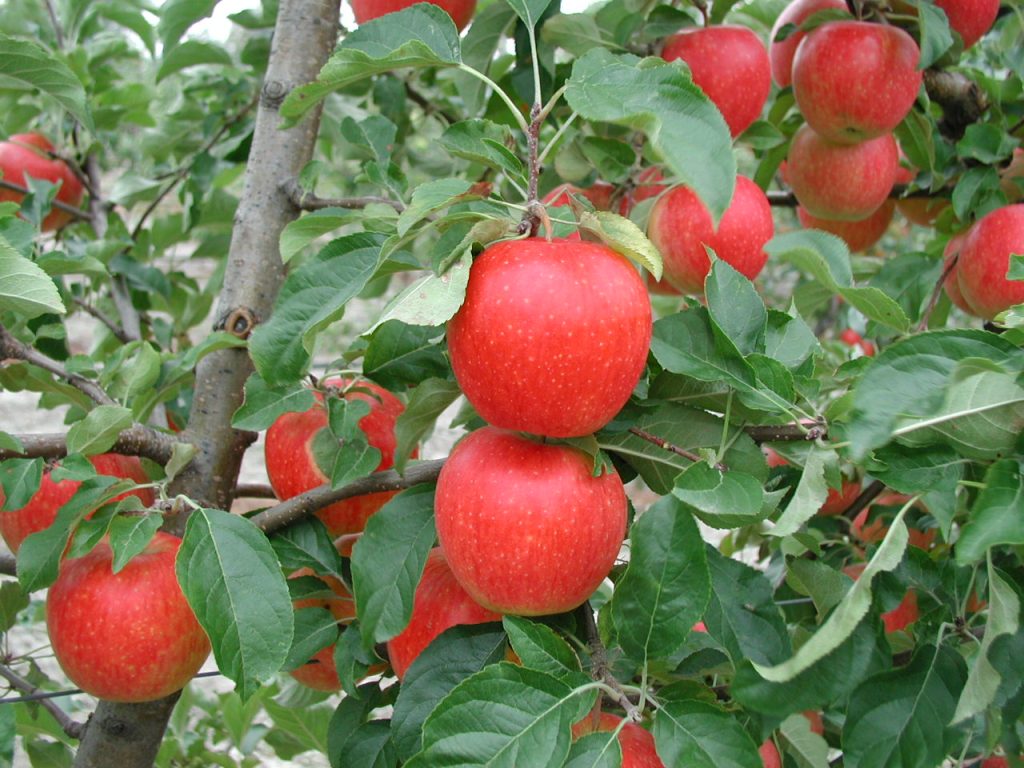
A
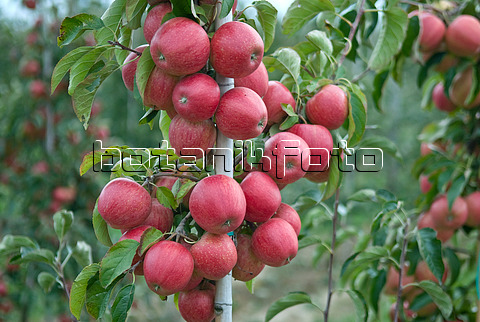
B
Figure 1.19.: Fruit of ‘Pinova’ (Corail) (A) and ‘Evelina’ (B) (Photo: Magdolna Tóth (A) and http://www.botanikfoto.com/preview/image-photo-apple-malus-domestica-evelina-502293.jpg (B))
Kanzi (Nikoter)
A hybrid of ‘Gala’ and ‘Braeburn’, it was bred in Belgium. It ripens in the same time as ‘Golden Delicious’. The fruit is an elongated truncated cone, with a pleasing deep red washed cover colour. Its flesh is firm, crunchy, sweet with some acids, has a pleasant flavour. The problem is that the fruit size is smaller than expected, and the cover colour develops only on a small fruit surface in a lot of production sites.
Figure 1.20.: Fruit of ‘Nicoter’ (Kanzi) (Photo: László Szalay)
Modi (CVVG198)
It was bred in Italy by crossing ‘Gala’ and ‘Liberty’. Its fruit is mid-large or large, elongated, the deep red colour covers the whole fruit surface. The flesh is firm, crunchy, juicy, sweet and has an excellent shelf-life. Resistant against scab (Vf=Rvi6), and according to its breeders, it is tolerant to powdery mildew and aphids. Its too dark cover colour may be a problem in some markets.
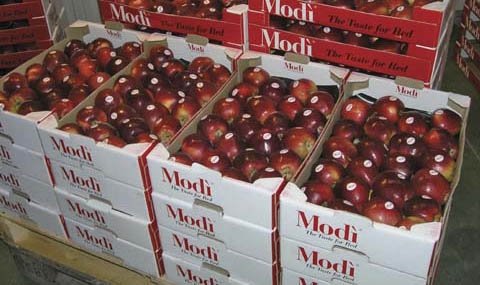
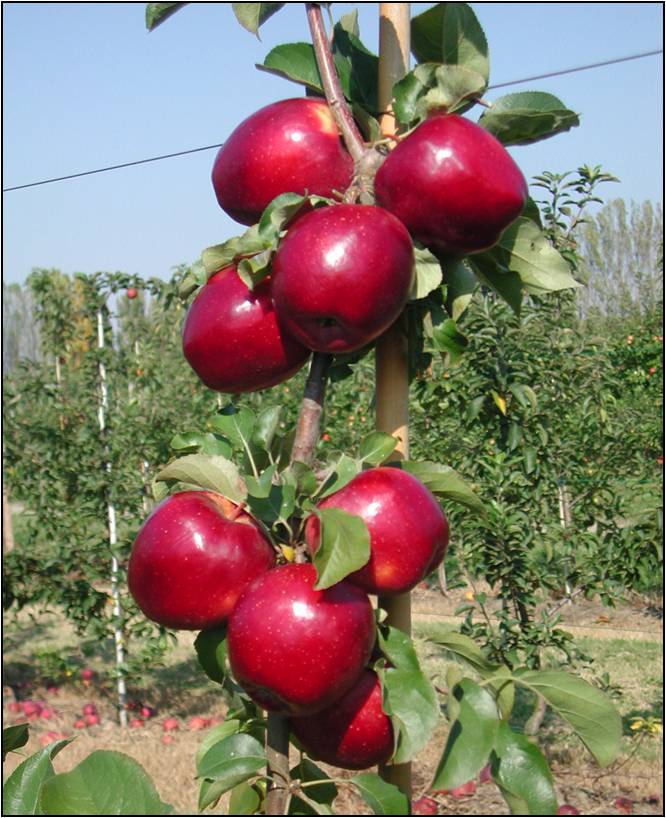
Figure 1.21.: Fruit of ‘Modi’ (Photo: http://www.goodfruit.com/Good-Fruit-Grower/April-1st-2008/The-green-red-apple/ )
Rubens (Civni)
It was bred in Italy by crossing ‘Gala’ and ‘Elstar’. It ripens nearly two weeks before ‘Golden Delicious’. The fruit is bicolour, red stripes on an orange red ground. Its flesh is firm, crunchy, sweet, has a distinctive scent. Performed well in Hungarian test so far.
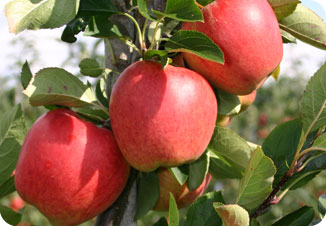
Figure 1.22.: Fruit of ‘Rubens’ (Photo: http://www.rubens-apple.com/upload/sidebar/m17.jpg )
Tentation (Delblush)
It was bred in France by crossing ‘Golden Delicious’ and ‘Grifer’. It can be harvested one week after ‘Golden Delicious’. Its fruit resembles that of ‘Golden Delicious’, with a little orange red blush on the sunny side. The flesh is firm, crunchy, juicy, sweet, pleasantly fruity. A disadvantage, that shadowed fruits not really differ from the original variety and its well-known variants, and there are concerns about fruitfulness as well.
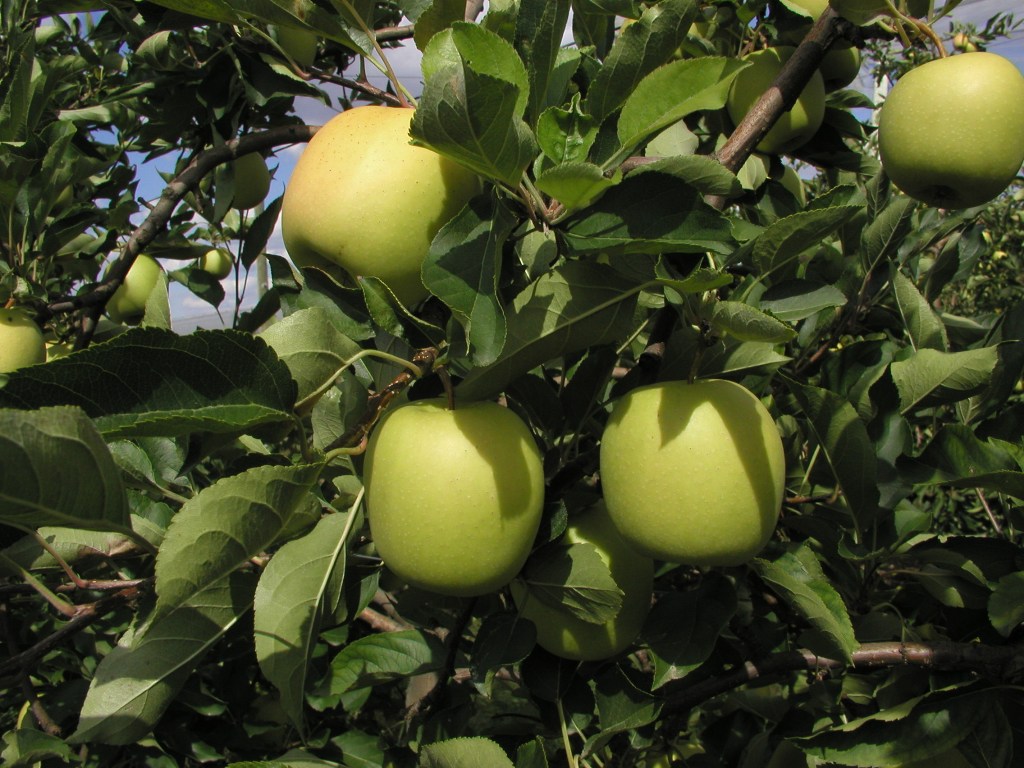
Figure 1.23.: Fruit of ‘Delblush’ (Tentation) (Photo: Magdolna Tóth)
1.8. Main aspects of associating scab resistant apple cultivars in the plantation
In case of scab resistant cultivars, for the selection of pollinators we have to know the flowering time of varieties, the fertility of the potential pollinator, the genetic compatibility of pollinator and variety to be pollinated, as well as the expected insect pollination intensity of cultivars to be associated. Compatibility is determined by S genotype, which is - if known - given in cultivar descriptions. Varieties with the same S allele are incompatible, cannot be associated with each other. If pollinators are wanted to be selected for the scab resistant cultivars listed above from those varieties, which are already popular in Hungary, we repeat their S genotype: Florina (S3S9), Prima (S2S10), Freedom (S5S*), Rewena (S3S9).
Scab resistant apple varieties can also be planted in the following variations or in combinations of these: (a) at least two diploid market varieties; (b) triploid variety(ies) and at least two diploid market varieties; (c) plantation from one variety with Malus sp. pollinators. According to (a), combinations matching the above mentioned flowering, fertility and compatibility aspects can be associated in the given plantation. Two diploid cultivars can only be sufficient to be planted, if they are in the same flowering group and mutually fertilize each other. If one of these criteria do not met, more than two cultivars need to be planted together in the field, or the two market varieties have to be associated by Malus sp. pollinators. The rate of pollinators should be at least 16-20% in case of most fertilization sensitive cultivars (5–6 rows + 1 row).
In variant (b), as the pollen of triploid market varieties are sterile in a high percentage, at least two diploid cultivars need to be planted beside them. Diploid market cultivars can also be substituted partly or totally by Malus sp. pollinators. The effective pollination period of triploid cultivars is longer than that of diploid cultivars. It is advisable to take advantage of this by choosing two pollinators which totally cover the flowering time of the triploid variety. In this case, a 16-20% (5–6 rows + 1 row) pollinator rate is suitable for triploids as well.
In variant (c) plantations from purely one cultivar can be established. Resistant ornamental apple cultivars has to be selected for scab resistant varieties. Because of the more unstable flowering of ornamental apples, 2-3 ornamental varieties has to be planted in a field. Their rate should be 5-10% in the plantation, and it is advisable to insert them among the trees of the main variety.
In case of planting scab resistant cultivars, beside variety association aspects we have to consider not to help the development of a new pathogen race. In order to keep the resistance reached by breeding maintained for long, we have to involve other possibilities as well. This is the aim of establishing genetically mixed plantations. The planting of varieties with the same genetic background (regarding resistance) in the same field has to be avoided. Therefore 2-3 different cultivars have to be planted in the orchard, which have different genes for resistance determination. This is the reason, why this characteristic is given in the description of scab resistant cultivars, according to the new nomenclature. For example breeders in Dresden recommend the mixed plantation of varieties carrying Rvi6 and Rvi17 genes. Also a good solution is to associate varieties with Rvi6+Rvi1 and Rvi6+Rvi8, or Rvi6 and polygenous varieties (VA), if they are suitable for pollinating each other on the base of other aspects (flowering time, compatibility). This feature of cultivars already present in growing: Prima and Florina (Rvi6 + Rvi1), Freedom (Rvi6+Rvi17 v. VA), Rewena (Rvi6). In mixed plantations, pathogens (and pests) can be kept on a lower level because of decreasing the appearance chances of new biotypes.
1.9. Control questions:
1. When did apple cultivation start approximately and on which continents?
2. When did apple cultivation start in each continents?
3. Briefly describe the history of conscious apple breeding from the beginning until present.
4. What are the major gene sources of cultivated apple?
5. How can ploidy of apple cultivars be describe?
6. What general findings were born after exploring the apple genom?
7. List the conventional methods of apple breeding!
8. Describe with cultivar examples the significance and role of free pollination and hybridization in creating apple varieties.
9. By which cultivars and characteristics has mutation breeding any importance?
10. How can biotechnology help conventional apple breeding?
11. List the major apple breeding aims in Hungary!
12. Describe briefly the past and history of Hungarian apple breeding, list at least three Hungarian apple breeders!
13. Which are the directions of Corvinus Apple Breeding Program and what results did they reach until present?
14. Describe briefly the present position of apple cultivar use!
15. Describe the major characteristics of apple variety ‘Artemisz’!
16. Describe the major characteristics of apple variety ‘Cordelia’!
17. Describe the major characteristics of apple variety ‘Hesztia’!
18. Describe the major characteristics of apple variety ‘Rosmerta’!
19. List new Hungarian non-resistant apple cultivars which can be recommended for trying and describe one of these!
20. List at least four scab resistant foreign apple varieties in ripening order and describe one of these!
21. List at least four scab resistant apple varieties which are suitable (also) for food industrial purposes and describe one of these!
22. List at least four scab resistant foreign apple varieties which are suitable (also) for fresh consumption and describe one of these!
23. List scab resistant apple varieties which have Golden-type fruits and describe one of these!
24. Describe the main features of the club variety system and the present significance and role of club varieties in international cultivar use!
25. Describe briefly a scab resistant club variety!
26. Describe briefly a non-resistant club variety!
27. Describe the main aspects of scab resistant apple cultivar association!
References:
Ballard, J. (1998). Some significant apple breeding stations around the world. Special report. Pacific Northwest Fruit Tester's Association. Selah, Washington. p. 24.Ballard (1998)
Bladvalter, M. 2012. Präsentation aller Apfelclubsorten. Obstbau-Weinbau. 1. p. 10–13.
Bodor, P., Tóth, M. 2008. Floral phenology investigation of scab resistant apple varieties and multi-resistant candidates - bred in Hungary - in 2007–2008. Int. J. Hort. Sci. 14. p. 7–10. Brown, A. G. 1975. Apples. p. 3–37. in: Janick, J.–Moore, J. N. (eds.). Advances in fruit breeding. Purdue University Press, West Lafayette, Indiana.
Brown, S.K.–Maloney, K.E. 2003: Genetic improvement of apple: breeding, markers, mapping and biotechnology. p. 31–60. in: Ferree, D. C.–Warrington, I. J. (eds): Apples. Botany, production and uses. CABI Publishing, Cambridge.
Flachowsky, H., Le Roux, PM., Peil, A., Patocchi, A., Richter, K., Hanke, M.V. 2011. Application of a high-speed breeding technology to apple ( Malus × domestica) based on transgenic early flowering plants and marker-assisted selection. New Phytol. 192. p. 364–377.
Halász J. 2013. Nemesítést támogató molekuláris technikák alkalmazása.p. 253-262. in: Tóth M. (szerk.) Az alma. Magyarország kultúrflórája 77. kötet. Agroinform Kiadó Budapest. in print.
Hancock, J.F., Luby, J.J., Brown, S.K., Lobos, G.A. 2008. Apples. p. 1–38. in: Hancock, J. F. (ed.): Temperature fruit breeding. Springer, East Lansing, USA.
Harris, S.A., Robinson, J.P. and Juniper, B.E. 2002: Genetic clues to the origin of the apple. Trends in Genetics, 18 (8) 426-430.
Hegedűs A. 2013. A Maloideae alcsalád genomevolúciója, az almagenom jellemzése. p. 241-246. in: Tóth M. (szerk.) Az alma. Magyarország kultúrflórája 77. kötet. Agroinform Kiadó Budapest. in print.
Janick, J., Cummins, J.N., Brown, S.K.,Hemmat M.1996. Apples. p. 1–77. In: Janick, J. és Moore, J.N. (eds.). Fruit breeding. Volume 1. Tree and tropical fruits. John Wiley and Sons, Inc., New York.
Laurens, F., Lespinasse, Y., Foulliet, A. 2005. A new scabresistant apple: Ariane. HortScience 40(2) p. 484–485.
Laurens, F. 1999. Review of the current apple breeding programs in the world: objectives for scion cultivar improvement. Acta Hortic. 484. p. 163–170.
Morgan, J., Richards, A. 1993. The book of apples. Ebury Press, London.
Nagy J. 2013. A nemes alma helye, rendszertana és rokonsága.p. 21-40. in: Tóth M. (szerk.) Az alma. Magyarország kultúrflórája 77. kötet. Agroinform Kiadó Budapest. in print.
O’Rourke, D. 2003. World production, trade, consumption and economic outlook for apples. p. 15–29. in: Ferree, D. C.–Warrington, I. J. (eds.): Apples. Botany, production and uses. CABI Publishing, Cambridge.
Schmidt, H. Van Der Weg, W.E. 2005. Breeding. p. 136–155. in: Tromp, J.–Webster, A. D.–Wertheim, S. J. (eds): Fundamentals of temperature zone tree fruit production. Backhuys Publishers, Leiden.
Szabó T., Soltész M. 2012. A short introduction of new apple varieties obtained. International Journal of Horticultural Science. 18(2) p. 135–137.
Tóth M. 2000. Fajtahasználat, fajtaértékelés. p. 43–100. in Gonda I. (szerk.) Minőségi almatermesztés. Primom Kiadó, Nyíregyháza.
Tóth M. 2001. Gyümölcsészet. Második, átdolgozott kiadás. Primom Vállalkozásélénkítő Alapítvány, Nyíregyháza.
Tóth M., Ficzek G., Király I., Kovács Sz., Hevesi M., Halász J., Szani Zs. 2012. ’Artemisz’, ‘Cordelia’, ‘Hesztia’ and ‘Rosmerta’, the new Hungarian multi-resistant apple cultivars. HortScience. 47(12): 1795–1800.
Tóth M. 2004: Alma. Fajtahasználat. p. 29–55. in: Papp J. (szerk.) 2004. A gyümölcsök termesztése. Mezőgazda Kiadó, Budapest.
Tóth M.,Szabó T. 2000: Az új évezred fajtái – A rezisztensek.(Integrált minőségi almatermesztés). Kinizsi Nyomda, Debrecen.
Tóth M. 2013. Az alma. Magyarország kultúrflórája 77. kötet. Agroinform Kiadó Budapest. in print.
